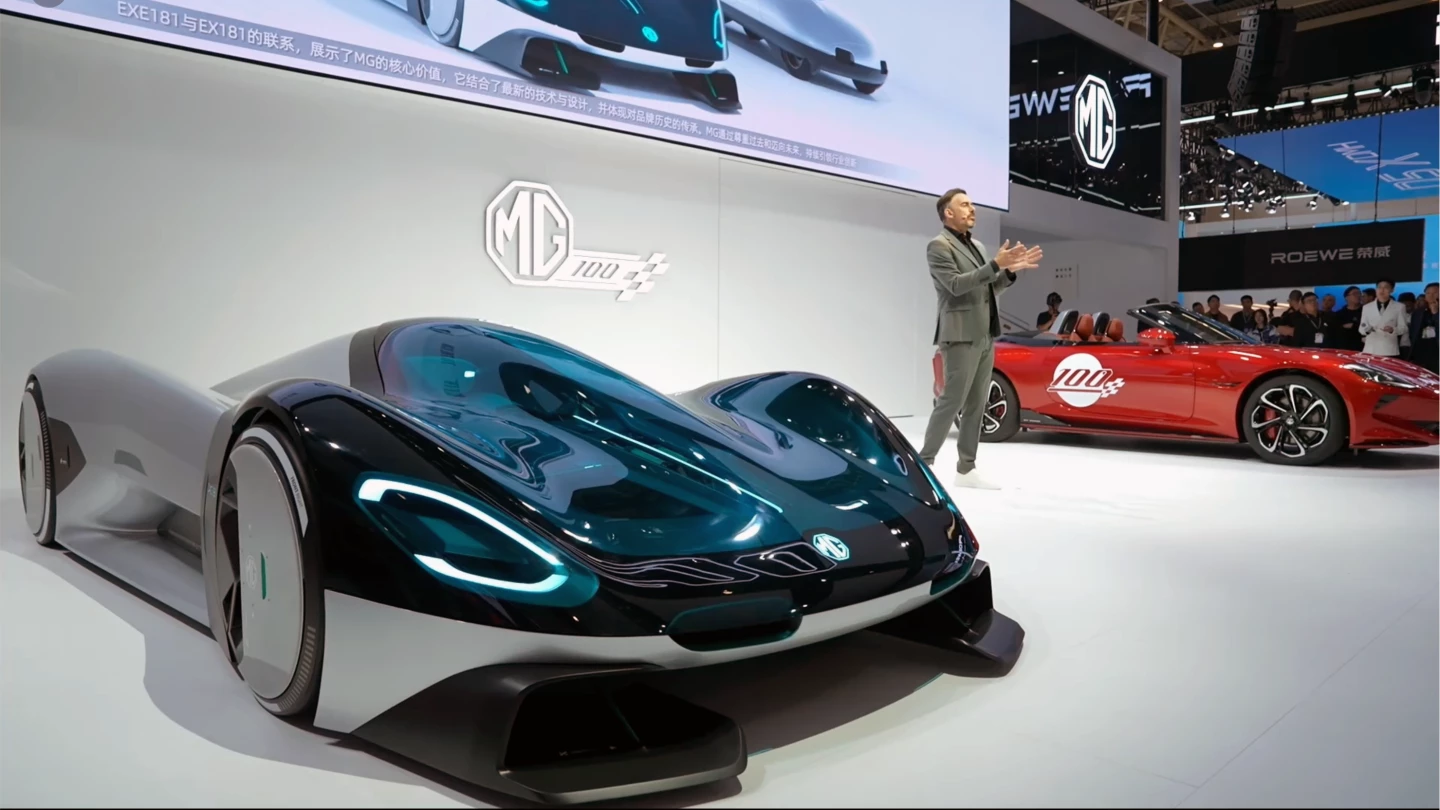One of the most stunning concept cars the world has ever seen was shown for the first time at Auto Shanghai this week, when MG took the wraps the EXE181 concept – an aerodynamic electric hypercar with one of the best drag coefficients ever seen in any registerable, road-going vehicle. If it reaches production, it will become the world's most aerodynamically efficient automobile.
The EXE181 was largely developed at SAIC's Design Studio in the United Kingdom and claims a drag coefficient of just 0.181, and realistically, that number was likely the target Cd all along given the car’s name and its relevance to the history of the proud mark.
The EX181 (note the missing E) was the car in which MG set a world land-speed record for 1500cc vehicles back in 1957 when Stirling Moss averaged 245.6 mph after runs in both directions on the Bonneville salt flats, then Phil Hill pushed the record to 254.9 mph two years later in the same car.

The best drag coefficient ever recorded by a production automobile was the 0.189 Cd of the Volkswagen XL1, which was produced between 2013 and 2015, and just 250 units were made. The second-best drag coefficient of a production car was the General Motors EV1, another hero car produced in low quantities between 1996 and 1999 with 1,117 units produced in two generations of vehicles.
Of current production models, the best appears to be the Xiaomi SU7 (0.195), Lucid Air (0.197), Mercedes-Benz EQS (0.202) with the Tesla Model S Plaid (0. 208) and Nio ET7 (0.208) all approaching best-of-breed status when it comes to using energy wisely.
You might be surprised to find that the McLaren Speedtail has a Cd of 0.278, the Mercedes-AMG ONE comes in only slightly better at 0.270 and Bugatti, Koenigsegg, Pagani et al, are beyond that. Indeed, most internal-combustion-engined hypercars aren't particularly aerodynamic in comparison to economy cars because the engines produce large amounts of heat that needs to be bled off and the ducts and intake manifolds for cooling all add to the drag. Then there's the need to create downforce at high speeds, which adds more drag.

Hence the EXE181 will become the most aerodynamic production vehicle the world has ever seen if it reaches production and no other marque gets in before it.
Production might not be as unlikely as the shape of the car might suggest.
2024 marks the 100th year of the British-to-the-bone MG Brand and big things are planned, particularly around the upcoming Goodwood Festival of Speed, where we expect more big announcements on what is perceived as its "home ground." The marque will celebrate its centenary at Goodwood and the new $70,000 MG Cyberster electric convertible sports car will be part of the central theme.

For those unfamiliar with the marque's recent history, there are a few important things to know.
The MG brand was all but dead when the MG Rover Group was sold off by the receivers for around US$1.0 billion in 2005. Nanjing Automobile Corporation (NAC) out-bid the State-owned Chinese automotive giant SAIC to own the brands and assets of the once promising empire. In 2007, SAIC purchased NAC and the MG name was reborn as SAIC’s premier export brand.
Hence, the once great MG name is set to relive its glory days under the stewardship of SAIC, and the centenary of the name sees it primed to become one of the world’s top selling cars once more.
Once it had been positioned as SAIC's main international brand, MG went from strength to strength, and in 2019, Morris Garages (MG) became China’s largest car exporting brand.

In 2022, SAIC announced that it had exported a million MG cars from China since 2007, also noting that the ratio between Chinese and overseas sales had been 50-50 to that point – one million domestic cars and one million exported cars.
The export numbers have been ramping quickly, because MG exported 740,000 vehicles to 84 countries in 2023, with that number representing 88% of all MGs sold during the year. If MG continues to expand at its current rate, it will become one the top selling automotive brands on the planet in 2025.
Although it is 100 years since Morris Garages started making cars in the famous British university town of Oxford, and despite building a world-beating reputation in the 1950s as a sporting brand, its fortunes appear brighter than at any time in its 100 years.
It is hence no surprise that MG should produce such a stunning concept car in its 100th year, as the primary export brand of the world’s biggest automotive industry – an industry that produced a record 30.14 million vehicles last year. Auto China is now the most important car show in the world, and arguably as important to China as the 2010 World Expo in Shanghai as a global showcase of capabilities.

So how much do we know about the car?
Not much, which is why even after the Beijing presentation, there wasn't anything to add that you can't see in the pics.
MG claims the car can accelerate from 0-100 km/h in 1.91 seconds, which puts it in some pretty impressive company. Motor1 magazine recently extrapolated the 0-100 km/h times for the Rimac Nevera (1.81 seconds - 1,888 hp), Pininfarina Battista (1.86 - 1,874 hp), Czinger 21C (1.9 - 1,350 hp) and Koenigsegg Gemera (1.9 - 2,300 hp) and the similarity of the MG EXE181 times suggest it is packing some serious horsepower too.

During the presentation, it was made quite clear that the car had been developed in a wind tunnel to go very fast. The above images were displayed of the car during the presentation.
That's why we think there's a second act coming, most likely to occur on or just before 11 July 2024, the start date of the 2024 Goodwood Festival of Speed.
We think MG is going to produce this car!


















